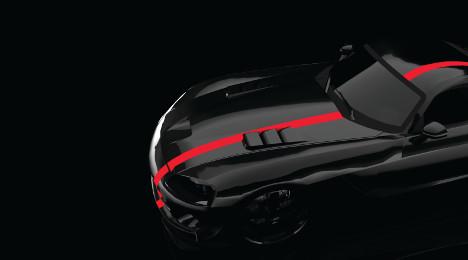4 questions with Tony Hughes of Moody’s Analytics

In the latest installment of the annual Power 300 issue of Auto Remarketing, we go behind the scenes with some of the leading companies in the used-car space and their top executives with a few Q&A features.
Next up in this series is Tony Hughes, the managing director of credit analytics at Moody’s Analytics.
Tony Hughes: Looking back, 2013 and 2014 were the best recent years. Used car prices were strong, credit was improving and considerable pent-up demand for cars remained after the lingering Great Recession. Much of this demand has now burned off, and we expect auto markets to stabilize for the remainder of 2016 and into 2017.
AR: What’s your general assessment of how the auto ABS market has performed so far this year?
TH: Although we have observed increasing levels of delinquencies and losses, Auto ABS transactions have withstood the weakening collateral performance and underwriting due to strong structural features. Prime and subprime ABS losses have been rising when compared with YTD last year. Subprime Auto ABS has had a mixed performance since ’08, but losses have been rising, year over year, since 2013.
This year has been no exception. As the upward trend has continued, U.S. prime Auto ABS performance has been consistently strong after the financial crisis, with net loss rates below 1 percent and 60-day delinquency rate below 0.6 percent, but these have now also begun to creep up this year, joining the trend in the subprime sector.
Bolstered by continuing low unemployment and historically high used car prices, the credit performance of U.S. auto loan asset-backed securities has been generally strong in 2016. No Auto ABS tranche has experienced a default. Auto ABS issuance 2016 YTD has been in line with the generally softer primary ABS market this year, lagging behind projections and 2015 issuance.
AR: With the ways vehicle quality and amenities have improved, how differently are vehicle depreciation and values viewed, especially compared to the distant past when some units with 100,000 miles were considered nearly worthless?
TH: It helps to think about a sector where technology has advanced much faster than autos. Consider cell phones. Ten years ago, the iPhone was about to be launched; Nokia flip phones and BlackBerries were state of the art. In July 2006, a Nokia 6610 was worth, say, $30 to buy secondhand. It was a solid, working brick that made calls, sent texts and allowed owners to play Snake to their heart’s content. Today, a secondhand iPhone 4 or Samsung Galaxy is $30. The 2016 $30 phone is a much better unit than a 2006 $30 phone, but both are (or were) worth $30. The point is that prices of old equipment are determined relative to the best, state-of-the-art products that exist at the time. The quality of these products rise much faster than their prices.
What this means is that modern consumers of 100,000-mile cars have much better, safer, more enjoyable, more reliable rides than they used to, and are therefore more expensive to buy in the secondary market. We expect the quality of the 100,000-mile car to grow very strongly for the foreseeable future.
AR: What technology advancement do you project as possibly impacting auto financing most going forward?
TH: Most would say self-driving cars or Uber. These do hold the power to disrupt the auto sector, though they will take longer to transform the industry than many expect.
However, auto finance is long overdue for a “Moneyball revolution” like that which happened to professional baseball over the past decade. The auto finance sector will rely less and less on subjective assessment of quality to derive price projections. Test drivers will be replaced by statisticians in determining residual prices, in the same way that talent scouts have been usurped by data scientists. The most transformative technoogical advances will be in the form of advanced statistical methods applied to used-car price projections.
4 questions with AUL's Jimmy Atkinson
Q&A with Jared Rowe
4 questions with Costo Auto Program's Lori Grone

 View The Latest Edition
View The Latest Edition

